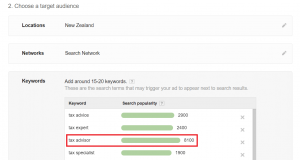Shortcuts to social media success may be tempting, but columnist Mark Traphagen explains why they’re not the best way to proceed.

We human beings love shortcuts. From the time our distant ancestors began to walk upright, hacking was our way of life. If a Neanderthal hunter could find a quicker path to the hunting grounds, he might out-compete his neighbor for the annual mastodon haul.
Thousands of years of evolution have not dulled this impulse, and much good has come of it. The huge leaps in technology, as well as the great scientific discoveries of the last few centuries, were largely driven by the impulse to find faster, better, more efficient ways to get things done.
However, to slightly paraphrase Frodo in “The Lord of the Rings“: “Shortcuts sometimes make long delays.”
In this column, I’ll explain why shortcut “hacks” to get around or take advantage of the algorithms of social media platforms can end up causing unwanted delays in obtaining the results you want from your social media marketing.
What is a social media algorithm hack?

First, let me be clear about what I’m not referencing when I talk about algorithm hacks. I’m not talking about any overtly black hat, illegal or unethical tactics. I’m also not talking about doing anything that might violate the terms of service of a given platform.
Those practices certainly exist, but this column is about hacks that are much more innocent and do not involve any infiltration into a social platform or altering or spoofing of its code. Instead, the hacks I’m going to address are often touted as “best practices” or “growth hacks” and can be used by virtually anyone.
To get more specific, I’m talking about any tactics or practices that attempt to circumvent or overcome limits or restrictions on reach or follower growth built into a platform’s algorithms — particularly those algorithms that control what is shown in the platform’s feed and to whom.
Why did social networks develop feed algorithms?
Since most of the hacks in my crosshairs in this column have to do with countering the effects of social network algorithms, it might be useful to understand why these algorithms even exist in the first place.

The allure of free reach
When social media first became a thing, it held out a tantalizing promise that quickly attracted marketers: the potential to directly reach an unlimited audience with your marketing messages… for FREE!
Furthermore, social platforms encouraged business adoption by quickly adding brand-oriented profiles that often included special tools, analytics and capabilities enabling any company to create a scalable reach-machine.
It didn’t take long for marketers to kill the golden goose, as they too often do.
Enter content shock
It’s an unwritten but seemingly invariable law of marketing that when the cost of distribution is low, content quality goes down. At the same time, the quantity of content rises exponentially. This is the problem first explained by Mark Schaefer in his prescient 2014 blog rant titled Content Shock.
What Schaefer described as a crisis for content marketers, social networks such as Facebook and Twitter began to see as a user experience problem.
Networks apply the brakes
The growing glut of commercial content in social feeds was proving to be antithetical to the reasons most people joined social networks. Typical social media users sign up for a network for two primary reasons: to keep in touch with friends and family and to be entertained. A third reason might be to be more informed, with breaking news and analysis.
When too much commercial content gets into users’ streams, they can get annoyed and start using the platform less (or even worse, stop using it altogether). That’s obviously not a good thing from a social network’s point of view. But it gets worse.
In his January 2018 announcement about a major change to Facebook’s news feed algorithm, CEO and founder Mark Zuckerberg referenced research that showed people who get too much “passive content” (content that doesn’t draw them into “meaningful interactions” with others) actually have a poorer sense of well-being. Facebook has long known that unhappy users quickly become ex-users.
So, slowly but surely, most of the social networks have begun to apply some form of algorithmic control and filtering on their users’ feeds.
Some of it was relatively gentle. For example, Twitter’s feed is mostly still a chronological display of everything posted by any accounts a user follows. However, in February 2016, Twitter announced the introduction of an algorithm that would bring tweets of possible interest to a user to the top of their feed. I call this a more “gentle” algorithm, though, because users could opt in or out of it, and it only activated if the user had not visited their feed for a while.
In other cases, the algorithms dramatically changed the timelines of users. In Facebook’s case, what users see in their feed is entirely determined by algorithms, and almost no users see even close to everything that their friends post.
As a result of the application of these algorithms, and their continued tweaking, businesses have seen their organic reach on social networks decline sharply over the years.
Why do marketers use algorithm hacks?

If you followed my brief history of social media feed algorithms above, the answer to this question should be obvious. Marketers had become addicted to the free, unlimited organic reach provided by social media, and, when it began to dry up, like any addicts, they reacted in either despair or anger or both.
Also similarly to real addicts, those marketers began to pursue almost any means to bring back their “fix” of free reach.
These algorithmic hackers also had their dealers and pushers. Social media consultants, experts and tool creators increasingly shifted away from the time-proven fundamentals of real marketing to create and promote various tricks and hacks to try to bring back the “good old days.”
Parallels to SEO
In a number of ways, what was happening in the social media marketing world was a recapitulation of what had occurred in the world of search years before.
When search engines finally became useful tools and established themselves as the primary way most users access the web, it didn’t take long for businesses and marketers to realize there was gold in them thar hills. And so arose the SEO (search engine optimization) industry to help businesses get found in search.
In the beginning, search optimization was a relatively easy affair. Early search engines mostly functioned by matching up keywords entered by users with words that appeared on pages on the web. Put enough of those keywords on the right places on your pages, and you had a good chance of ranking high in search and bringing free traffic to your site.
But as more site owners began to chase the search engines, a similar thing happened to what we later saw happen on social networks, as described above. Content quality began to go down sharply, as site owners created content that wasn’t meant for humans but instead was aimed at attracting the search engines.
And so began the Cold War arms race between site owners and search engines that has existed ever since. The search engines invested heavily in increasingly complex algorithmic updates meant to ferret out better results for users, raising the incentive for some SEOs to invest almost as heavily in ways to game those algorithms.
To be fair, a great deal of the SEO industry has, whether begrudgingly or not, come to accept that the new algorithms really have made search better, and that investing in high-quality content and better user experience, the things the search algorithms now seek to reward, is a better path to long-term success.
Meanwhile, back on social…
Sadly, at least from my observations, the social marketing world has been much slower to adapt to the similar changes it is encountering. Certainly, there are examples of social media consultants, practitioners and pundits who do a great job of pointing to a better way. Unfortunately, though, it appears a great many are still doubling down on an arms race with the social networks they can never win.
Examples of social algorithm hacks

Here are a few examples of common hacks used by business accounts to try to circumvent or overcome (or even “game”) social media feed algorithms. This list is by no means exhaustive because the number of possible hacks is as large as the creativity of social marketers. In the final section of this post, I’ll explain why I think relying on these hacks and tricks is a bad strategy.
• Engagement bait. Most common on Facebook, but seen elsewhere, engagement bait is crafting a post with the sole intent of enticing users into simple, low-commitment engagement, such as a like, a share or a quick comment. Examples include “share or like if you found this funny!” or “Comment ‘yes’ if you agree!” This was a prevalent Facebook tactic because Facebook used to place a high value on engagement of any kind. However, with the advent of the latest algorithm update mentioned above, this kind of engagement does little for posts.
• Hired engagement. The aim of this hack is the same as engagement baiting: to run up engagement numbers to trick the algorithm into boosting the post. However, in this case, the post creator is paying for either real people and/or bot accounts to engage with the post. Alternatively, this may be done via private rings of people who agree to engage on each other’s posts.
• Follower growth hacking. This is the pursuit of followers for the sake of follower numbers. In other words, the goal here is to simply gain as many followers as possible, by whatever means possible, with no regard to who those followers are. There are numerous ways to do this, including paying for followers (usually via paid services that promise to bring tons of followers), running contests and incentives for new follows and gating access to content or offers with a required follow.
On Twitter, because anyone can follow anyone else, such growth hacking is rampant. In addition to the methods listed above, another common hack is to simply follow as many people as possible each day, often by means of an automated tool. Since a lot of accounts follow back anyone who follows them, it’s not hard to see how this could run up huge numbers rather quickly.
• Secret power words. Bloggers and social media pundits regularly spread the belief that using certain words or phrases in a post (or similarly, certain types of images) triggers social networks to show the post to more users. A great example of this is the idea that enticing users top post the word “Congrats!” in the comments of a post increases the reach of that post. This idea seems to trace back to a 2014 anecdote where Mark Zuckerberg supposedly ordered Facebook engineers to boost posts that had lots of “Congrats!” comments so that his niece’s birthday would outrank a co-worker’s birthday post.
But not all hacks are really hacks…
Before moving on to why I think hacks like these are bad social media strategy, I want to note that not everything social marketers call a “hack” is bad, or even really a hack. Some are just good practices taking advantage of things the social networks have provided, and even encouraged businesses to use.
An example of this would be using preferred audience targeting for Facebook page posts. This little-known feature allows you to tag a post with categories that help Facebook to show it more to the right people in your audience, which should result in better engagement and response, since not all your fans are going to be interested in everything you post.
Another so-called hack that is actually a useful best practice is optimizing your Open Graph tags. Open Graph is a set of tag standards that has been adopted by most major social networks. The tags let you customize and control how your post will appear when shared on social media, including its title, description and post image.
Why is social algorithm hacking a bad business strategy?
We’ve covered why social networks have developed reach-limiting algorithms, why marketers often try to hack through those algorithms and some of the hacks they use to do it. Now, it’s time to explore why spending a lot of time trying to hack your way around social media algorithms is a waste of time.
1. Some of these hacks work, but…
I won’t deny that some of the algo-busting hacks seem to work. But I’ll admit that with two very important caveats:
- They only work for a limited purpose.
- They usually only work for a limited time.
Some hacks might actually get you more reach or increase your number of followers or get you more engagement on your posts. But that’s all they might ever get you. Also, what if something changes on the network and your hack stops working? More on each of those points below.
2. Hacks don’t align with real business goals
Sure, a particular hack might (for a while) increase your reach on a social network. But to what end? Who are you reaching? Are they really people who have any interest in your business or any potential of becoming customers?
I’ll confess that my company indulged in a legitimate “growth hack” that ended up bringing us little value, even though this “hack” is one built into and encouraged by the platform itself. We spent a lot of money on a Facebook Page Like campaign via Facebook ads. With that campaign objective, Facebook tries to optimize your ads to be shown to people more likely to Like your page. We had a goal of getting our page up to 10,000 likes.
We achieved that goal. However, other than having a nice social proof number, we seemed to gain little business benefit from it. In fact, we may have even hurt our Facebook marketing. Since gaining all these new “fans,” we have had to all but abandon boosting our posts to our Page fans. When we do, no matter what the content or creative, we tend to get a high negative response, which destroys our relevance score and drives up advertising costs.
In other words, as stunning as it sounds, it appears that a large number of people who liked our page during the campaign don’t actually like our content!
So it appears that even Facebook’s own “hack” for followers can’t guarantee the followers it gains are truly relevant to your page’s target market. Lesson learned!
The point here is that real marketers always keep their eye on the prize: real ROI for their businesses. In part because such ROI can be difficult to measure from social media, social media practitioners have become used to evaluating success with metrics such as reach and engagement. They need to be brought back to the cold reality that reach and engagement alone, if they are not to the right people at the right time, do not produce actual business results.
3. Algo hacking locks you into a cold war you can’t win
As our friends in SEO discovered over the past two decades, almost anything they could come up with to hack organic search traffic, Google algorithm engineers could find a way to counter or penalize.
While social networks have been slower to clamp down on what they consider low-value content and tactics in their feeds, they are now going at it with a vengeance, in part driven by the bad publicity some of them received from revelations of extreme social hacking influencing recent US elections.
The aforementioned recent Facebook news feed change was perhaps the biggest wake-up call, as it virtually wiped out whatever effectiveness most of the standard algo-busting hacks had. It proved that given enough incentive, social networks can and will kill your reach if they think what you’re doing has a negative effect on their users.
Nowadays, most SEOs who work for or consult with major businesses don’t waste time trying to hack or circumvent search algorithms. They’ve learned that a cold war arms race with Google only results in a lot of wasted time and resources at best, and a complete loss of organic search traffic at worst. Instead, they’ve adopted the practices that Google’s algorithm updates were pushing them toward (e.g., quality content, better user experience, mobile optimization).
Here’s the thing: Along the way, they discovered that those practices were actually better for their businesses. It wasn’t just that they were necessary in order to stay in Google’s good graces. Creating better sites with content people actually found useful was (shocker!) better for the bottom line.
Build your social media strategy for the long term
It’s time social media marketers adopted the same attitude. Rather than wasting time chasing after the latest hack or trick to try to get some temporary gain over the latest platform algorithm update, we should realize that most of what they are pushing us toward is really better for our business in the long run.
The things that continue to work on social networks regardless of algorithm changes are the things that our prospects and customers value most:
- Useful, engaging content.
- Real help and interaction with real people at the business.
- A sense that their lives are made better because they know you.
And guess what? When you are creating and doing those things, not only will you do better with the social networks, you’ll likely accomplish what you should be there for in the first place: gaining new customers and business.
Opinions expressed in this article are those of the guest author and not necessarily Marketing Land. Staff authors are listed here.
Marketing Land – Internet Marketing News, Strategies & Tips
(24)
Report Post






